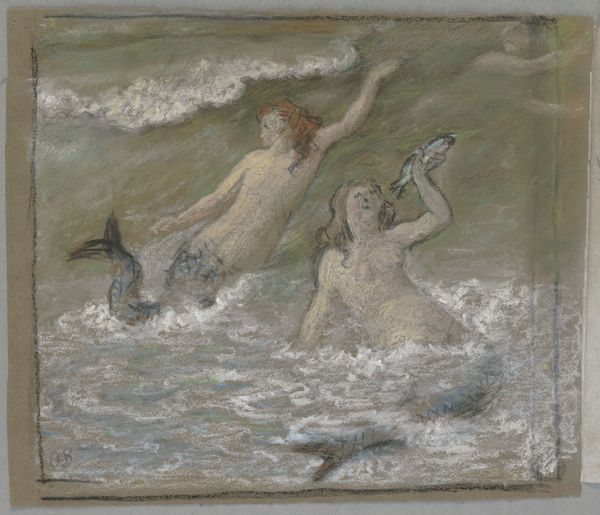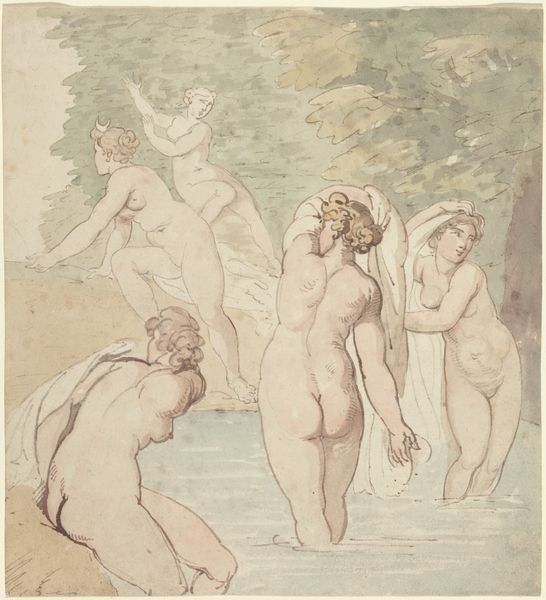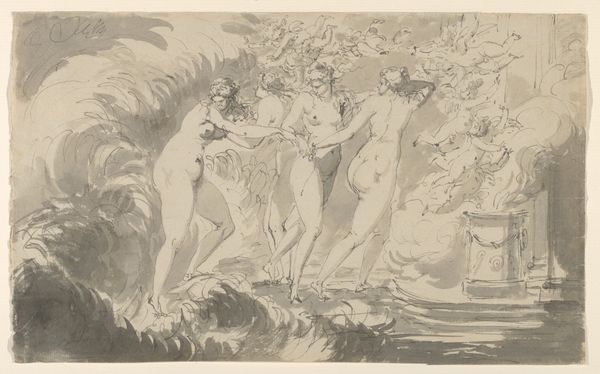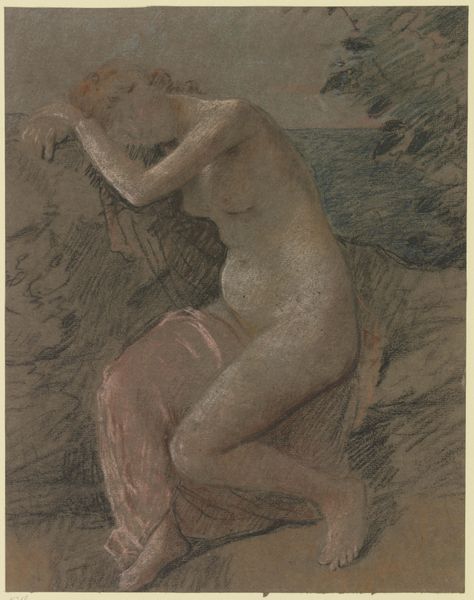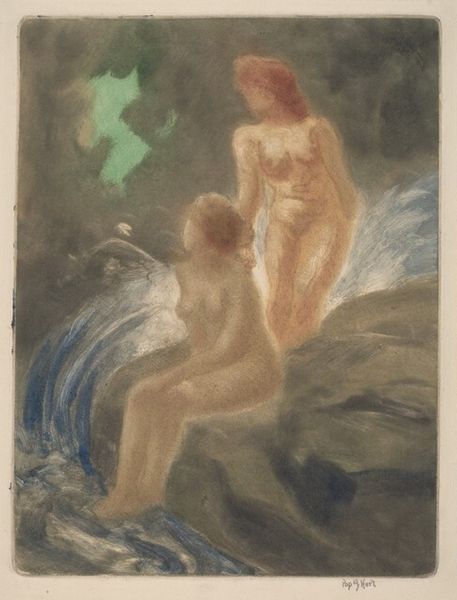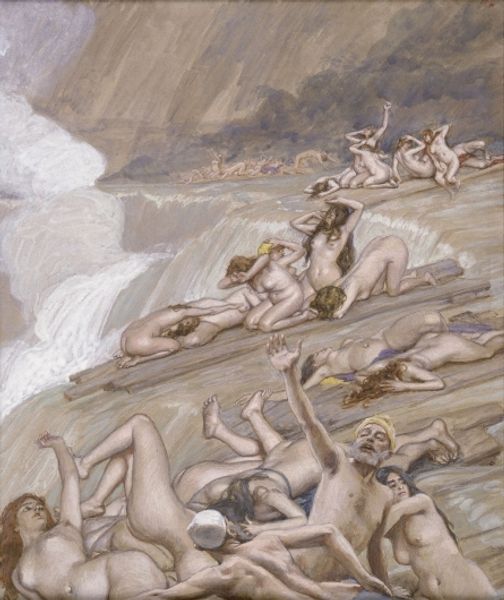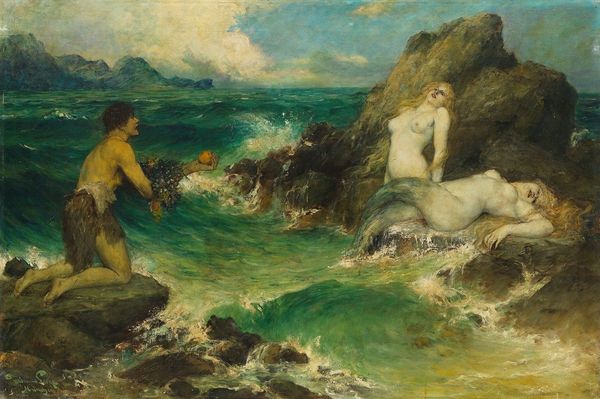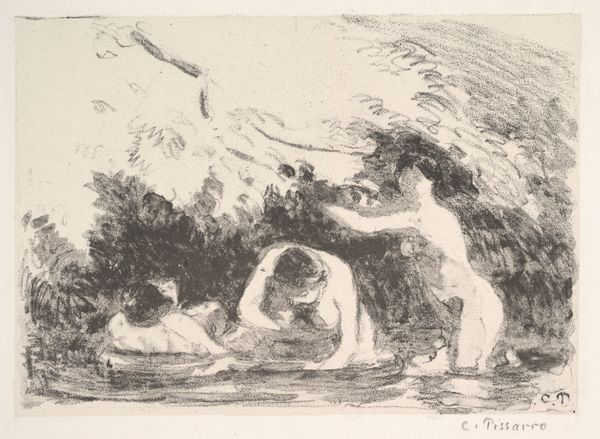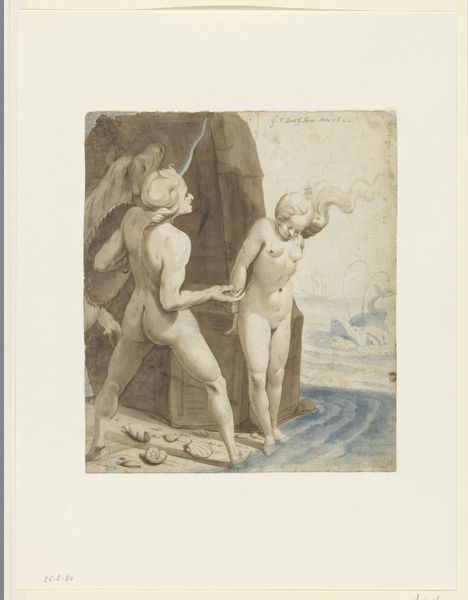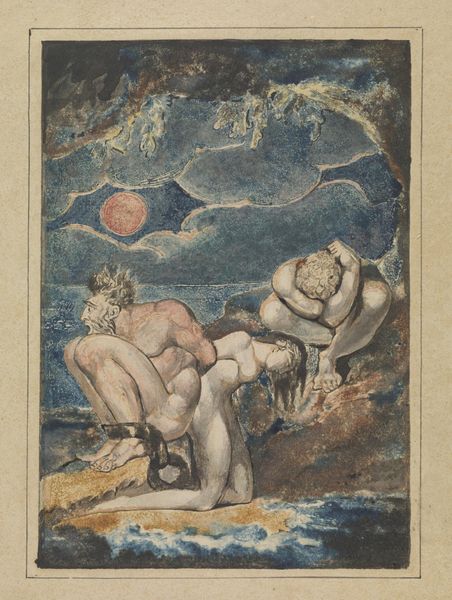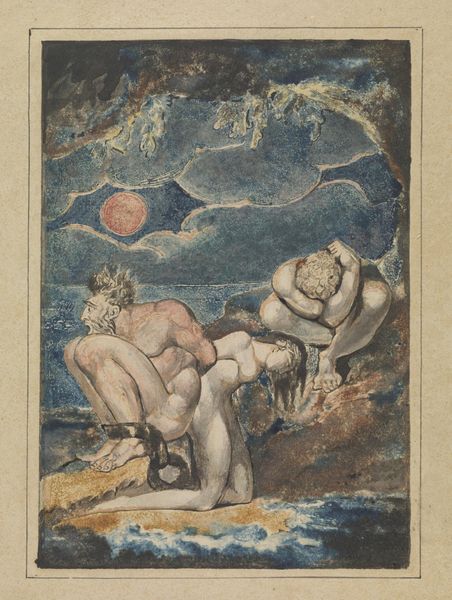
drawing, paper
#
drawing
#
16_19th-century
#
water colours
#
possibly oil pastel
#
paper
#
handmade artwork painting
#
oil painting
#
german
#
acrylic on canvas
#
underpainting
#
painting painterly
#
watercolour bleed
#
watercolour illustration
#
watercolor
Copyright: Public Domain
Curator: This piece, titled "Drei nackte Frauen auf einem Felsen"—Three Nude Women on a Rock—is a drawing by Otto Scholderer, likely from the late 19th century. It's currently held here at the Städel Museum. Editor: My immediate reaction is how wonderfully soft the pastel colors are. It lends a certain dreamlike quality to what could have been a more academic or even provocative subject. Curator: It is interesting how Scholderer, a German artist known for his Realist paintings, approached the nude female form. It avoids the classical idealization we often see, hinting instead at a naturalistic, though still romanticized, view. We can consider that in the late 19th century, nudes in art served multiple functions, ranging from exercises in form to allegorical representations and symbols of a changing society. Editor: The medium plays a vital role. Using what seems like watercolours or pastel on paper offers a delicacy, contrasting sharply with, say, an oil painting that would provide heavier, more defined forms. This makes me think about the purpose – a preparatory study? Or was the lightness of the medium part of a deliberate aesthetic choice about how women should be portrayed? Curator: It raises fascinating questions about the intended audience and function of this artwork within its specific socio-historical context. The way Scholderer uses line and shadow to describe their bodies moves us away from strictly academic displays, leaning into, perhaps, a critique of art’s traditionally rigid depictions of the female body and the societal roles projected onto women in general. Editor: And look at the visible strokes and blended colors. The rock and the water look raw, unpolished, demonstrating an immediate contact with material – it’s a scene built from tactile encounters. This reminds me to consider how often art training meant apprenticeships for mixing pigments; even finished 'high art' always had its feet in the manual labor of crafting materials. Curator: Exactly. And thinking of the artwork within the Städel’s collection—displayed here, amongst other 19th-century works, means viewing it through the lens of institutions which reinforce canons and influence artistic values. These settings contribute to our understanding but also dictate, to a degree, the meanings we take away from a work like this. Editor: Seeing this interplay between materiality, technique, and social context reminds me to examine my own presumptions when interpreting art. Every image is touched by labor and cultural choices, from canvas fibers to exhibition placement. Curator: Absolutely. Reflecting on "Drei nackte Frauen auf einem Felsen" pushes us to consider not just what the artist intended, but how historical forces and institutions continue to shape how we view and understand art today. Editor: Yes, stepping away, I'm freshly aware of the dialogue between materials and culture. There’s constant meaning to unearth when we focus on both how things are represented and with what things are made.
Comments
No comments
Be the first to comment and join the conversation on the ultimate creative platform.
